Realtor
Home Loan Process
Home Loan Process: Steps to Getting a Mortgage
Getting a mortgage is a significant milestone on the journey to homeownership. Whether you’re a first-time buyer or a seasoned homeowner, understanding the home loan process is crucial for a smooth and successful transaction. In this article, we’ll walk you through the essential steps to obtaining a mortgage, from preparation to closing.
1. Assess Your Financial Situation:
Before you start shopping for a mortgage, it’s essential to assess your financial situation. Calculate your monthly income, expenses, and debts to determine how much you can afford to borrow. A thorough review of your credit report can help identify and address any issues that might affect your creditworthiness.
2. Determine Your Budget:
Establish a realistic budget for your home purchase. Factor in not only the down payment but also other costs like closing costs, property taxes, insurance, and maintenance. Having a clear budget will guide your home search and loan selection.
3. Get Pre-Approved:
Pre-approval is a crucial step in the home loan process. It involves submitting a mortgage application to a lender who will assess your creditworthiness and provide a pre-approval letter. This letter shows sellers that you are a serious and qualified buyer, increasing your chances of getting the home you want.
4. Choose the Right Mortgage:
There are various types of mortgage loans available, each with its own terms and requirements. Research and select the mortgage that best suits your financial situation and long-term goals. Common options include fixed-rate, adjustable-rate, FHA, VA, and USDA loans.
5. Shop for Lenders:
Don’t settle for the first lender you come across. Shop around for the best mortgage rates and terms. Consider working with a mortgage broker who can help you compare offers from multiple lenders.
6. Gather Documentation:
Lenders require extensive documentation to process your loan application. This may include proof of income, tax returns, bank statements, employment verification, and more. Be prepared to provide all necessary documents promptly to avoid delays.
7. Apply for the Mortgage:
Once you’ve chosen a lender, submit your mortgage application. The lender will review your application and documentation, and you may need to provide additional information during the underwriting process.
8. Lock Your Interest Rate:
Interest rates can fluctuate daily, so it’s important to lock in your rate when you’re satisfied with the terms. A locked rate ensures that you’ll receive the agreed-upon interest rate even if market rates rise before closing.
9. Home Appraisal and Inspection:
The lender will typically require a home appraisal to assess the property’s value. You may also choose to have a home inspection for your peace of mind. These steps help ensure that you’re making a sound investment.
10. Finalize the Loan:
During the underwriting process, the lender will verify all information and may request additional documentation. Be responsive to their requests to keep the process on track.
11. Closing:
The final step in the home loan process is the closing, where you sign the loan documents and take ownership of the property. You’ll need to pay closing costs, which can include fees for the lender, title company, and government recording.
Obtaining a mortgage is a detailed process, but with careful preparation and guidance from experienced professionals, it can be a smooth and rewarding experience. Remember to consult with your real estate agent, lender, and financial advisor throughout the process to ensure you make informed decisions and achieve your homeownership goals.
| ||||||||||||||||||||||||||||||||||||||||||
